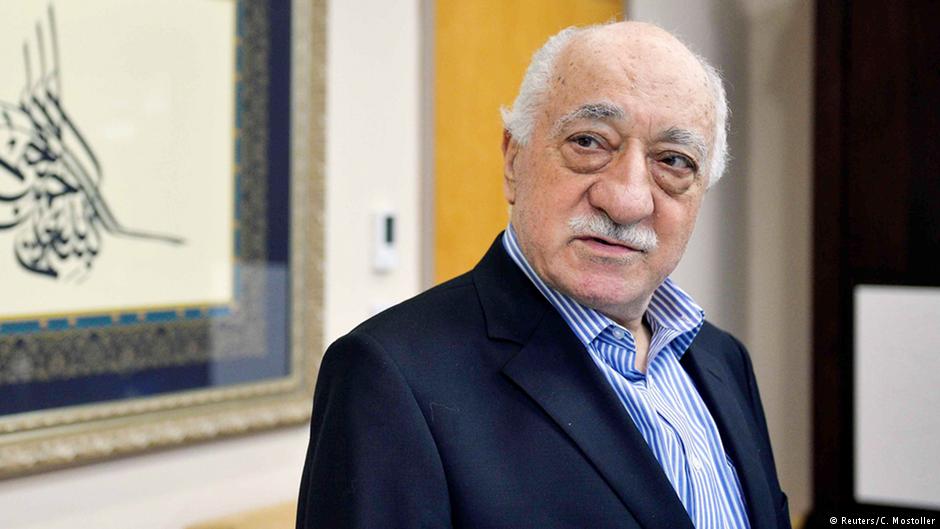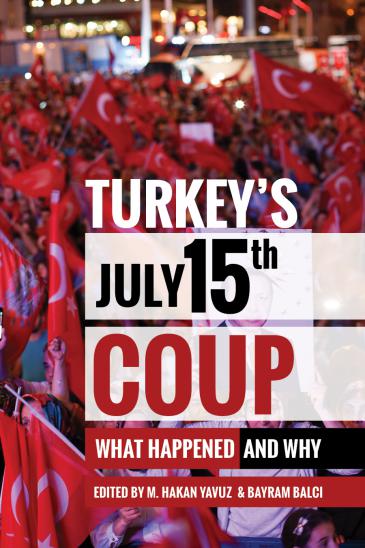Harmless is not the word

Almost two years on from the attempted coup and arrests of supporters of the Islamic preacher Fethullah Gulen are still an almost daily occurrence. In President Recep Tayyip Erdogan's eyes, there is absolutely no doubt that the Gulen movement was behind the failed coup attempt of 15 July 2016, which is why his AKP government is determined to wipe the organisation off the face of the earth. Nevertheless, although the second anniversary of the coup attempt is fast approaching, the role actually played by Gulen and his supporters in the dramatic events of that night is still being debated.
There is still no absolute clarity about what happened. In Germany too, the wildest conspiracy theories still abound. And so the recent release of the book "Turkey's July 15th Coup – What Happened and Why" by the University of Utah could not be more timely. This collection of articles edited by political scientists M. Hakan Yavuz and Bayram Balci is not only the first comprehensive study of the failed coup, it is above all the first academic study of the Gulen movement since the events of 15 July 2016.
To this day, many in the West find it hard to believe that the movement that is simply known as the cemaat (Islamic community or group) really was behind the failed coup that cost 250 people their lives. Even Bruno Kahl, head of Germany's intelligence agency, the BND, declared in March 2017 that he could find no indication that the movement was indeed responsible for the events of 15 July and accused Erdogan of using it as a "welcome pretext" to remove Gulen supporters from the Turkish civil service. The movement, said Kahl, was no more than a "civil organisation for continuing religious and secular education."
Underestimated for far too long
So the cemaat is just a straightforward educational organisation and nothing to worry about? The interview in which Kahl made these remarks was greeted with incredulity in Turkey. The conviction that the Gulen movement was behind the attempted coup is not just restricted to Erdogan's ruling AKP; it is shared by almost all parties and media. One can, of course, counter that people in Turkey are hardly at liberty to contradict the government's version of events. This is why the assessment of independent experts – such as those writing in this recently published book – is all the more important.

All twelve authors have spent much time studying the Gulen movement. Several of the researchers admit that they long underestimated the political ambitions of the movement and allowed themselves to be blinded by its self-image as a moderate Islamic movement for education and dialogue.
They also point out that the cemaat is notoriously lacking in transparency. Secrecy and obfuscation have always been part of its strategy. Neither its supporters nor its schools, media and other institutions ever openly declare their support for Gulen.
The cemaat likes to portray itself as a liberal, democratic grassroots movement. The authors of the articles in this book, however, show that it has a rigid hierarchy and is extremely conservative when it comes to moral issues.
Historian Michael A. Reynolds of Harvard also shows that the schools, residential homes and centres of private tutoring run by the cemaat were never an end in themselves.
Instead, Gulen wanted to use them to raise a "golden generation" shaped by Islam but that had received a modern education and would therefore be in a position to change the country according to his vision.
Moving through the arteries of the system
His supporters have sought posts in the civil service since the 1980s. One particular speech made by Gulen is quoted several times in the book. In this speech, he called on his supporters "to move through the arteries of the system" until they had reached "all centres of power".
It was only when the "time is right" that they would be allowed to disclose their identity, he said in a speech that was made public in 1999. Despite declaring at the time that the recording was manipulated, Gulen fled to the U.S. to avoid an impending prosecution. He still lives in Pennsylvania.
When the AKP came to power in 2002, Gulen's well-educated supporters proved very helpful in filling positions in the police, judiciary and administrations. Although supporters of the AKP and the cemaat shared the same vision of a society shaped by Islam, there were clear differences between Erdogan and Gulen on both domestic and foreign policy issues. Beginning in 2011, these differences led to tension between the two sides and eventually to the collapse of their informal coalition, as anthropologist Caroline Tee of the University of Cambridge writes.Unlike Erdogan, Gulen wanted to hold fast to the alliance with Israel and rejected the idea of a rapprochement with Iran. Above all, however, he was opposed to Erdogan's overtures to the Kurds. In February 2012, Gulen supporters in the judiciary tried to put Hakan Fida, head of the country's intelligence service, in the dock for his peace talks with the PKK. Erdogan struck back, giving orders for the cemaat's centres of private tutoring to be shut down.
Head to head
When Gulen supporters in the police and judiciary launched corruption investigations into people close to Erdogan in December 2013, the conflict became visible for everyone. Back then, many in the West were sceptical about Erdogan's claim that the Gulen movement had tried to topple him. After all, as far as the West was concerned, the movement was dedicated primarily to dialogue and education. In Turkey, on the other hand, few were in the least bit surprised. After all, journalists like Ahmet Sik had long warned that the state was being infiltrated by the cemaat.[embed:render:embedded:node:24390]By July 2016, the government had secured control of most of the schools, media and companies belonging to the cemaat and had begun removing its supporters from the civil service. The movement feared for its survival. Reason enough for a coup? M. Hakan Yavuz answers this question with a resounding yes. In his opinion, the cemaat had to act in July 2016 in order to prevent itself from being destroyed, particularly as it was expected that the Supreme Military Council would agree to move against Gulen supporters in the military at its annual meeting in August.
Yavuz is convinced that although the attempted coup got underway at very short notice, it was certainly not "amateurish" as some in the West claimed. Indeed the deployment of thousands of soldiers with dozens of tanks, helicopters and aircraft hinted that the coup had been carefully planned well in advance.
With Gulen's personal blessing?
Moreover, because of the hierarchical structure of the cemaat and its tendency to self-sufficiency, Yavuz is also convinced that the attempted coup had the personal blessing of Gulen himself and that his supporters acted without consulting the Kemalists or other groups in the military.
Not all the other authors in the book agree. David Titterson, for example, doubts that any Gulen supporters had risen so high through the ranks of the military as to become generals. After all, after 2002, all budding officers suspected of any religious tendencies had been weeded out. Moreover, there are indications that Erdogan got wind of the Gulen supporters' plans before the attempted coup got underway and let them go ahead so that he could deal severely with the cemaat when it was all over.
One of the book's weaknesses is that Yavuz and other authors devote hardly any space to such alternative scenarios and swiftly gloss over any discrepancies in the government's narrative. Ultimately, many questions regarding the night of the failed coup remain unanswered.
Nevertheless, the book impressively illustrates how naive it is to classify the cemaat as a harmless educational organisation. In Germany in particular, where the movement runs dozens of schools, a critical reassessment is urgently needed. This book would be a good place to start.
Ulrich von Schwerin
© Qantara.de 2018
Translated from the German by Aingeal Flanagan
"Turkey's July 15th Coup – What Happened and Why", edited by M. Hakan Yavuz and Bayram Balci (published by The University of Utah Press)